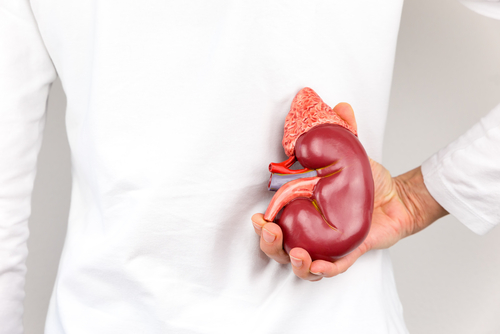2 Urine Biomarkers Can Help Detect Aminoglycosides-induced Kidney Damage in CF Patients, Study Suggests
Written by |

Quantification of two specific molecules in urine can help in the early detection of kidney damage triggered by treatment with aminoglycosides in patients with cystic fibrosis (CF), a study suggests.
This finding was reported in the study “Urinary Biomarkers of Aminoglycoside-Induced Nephrotoxicity in Cystic Fibrosis: Kidney Injury Molecule-1 and Neutrophil Gelatinase-Associated Lipocalin,” published in the journal Scientific Reports.
Antibiotics in the group of aminoglycosides are commonly used to manage acute pulmonary exacerbations and Pseudomonas aeruginosa infections in patients with CF.
Despite their therapeutic activity, aminoglycosides can promote damage to the kidneys. Indeed, exposure to these antibiotics has been associated with an increased risk of acute kidney injury in children with CF, and 31 to 42 percent of adult CF patients have impaired renal function due to a cumulative effect.
Kidney impairment is routinely evaluated based on creatinine levels in urine. However, detectable changes only happen when significant and potentially irreversible kidney damage has occurred. This highlights the need of better biomarkers that may aid for early detection of kidney damage triggered by aminoglycosides treatment.
A team led by researchers at the University of Liverpool evaluated the potential of two urinary renal biomarkers — kidney injury molecule-1 (KIM-1) and neutrophil gelatinase-associated lipocalin (NGAL) — to identify aminoglycoside-induced damage in children with CF.
A total of 158 children and young adults with CF (up to 20 years old) were recruited from 10 clinical sites across the United Kingdom; 23.4 percent had received at least one course of treatment with tobramycin, an aminoglycoside.
Researchers found that during aminoglycosides treatment, the levels of both KIM-1 and NGAL increased by 2.28-fold and 4.02-fold, whereas creatinine value increased only 1.07 times. The team also found that KIM-1 levels were associated with the number of tobramycin courses.
Analysis of the biomarkers in urine during the 14-day course of tobramycin further showed that KIM-1 levels tended to remain elevated even upon termination of the treatment, whereas NGAL levels returned to baseline levels.
During the study follow-up period, that ranged from 12 to 24 months, no patient developed AKI.
“Our research shows that KIM-1 may be a useful, non-invasive, biomarker of acute and chronic kidney damage associated with exposure to aminoglycosides in patients with CF,” Steve McWilliam, MD, PhD, said in a press release. McWilliam is a National Institute of Health research academic clinical lecturer in Pediatric Clinical Pharmacology from the University of Liverpool, and lead author of the study. “But its clinical utility needs to be further evaluated in prospective studies,” he added.






